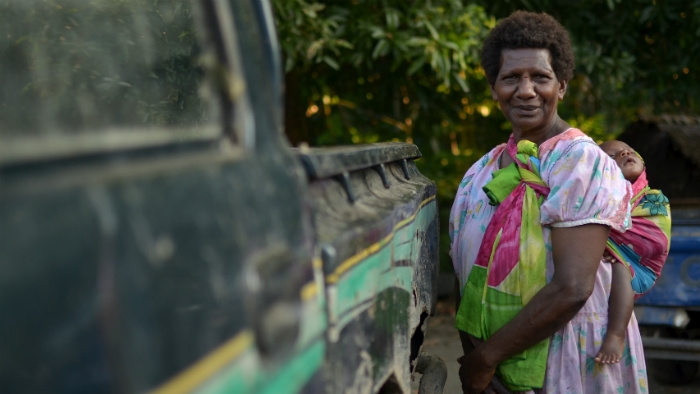- Over 20 percent of people in most Pacific Island Countries live in hardship, meaning they are unable to meet their basic food and non-food needs. Within countries, many factors have a bearing on hardship, including location, education, work status, and age.
- People in the Pacific are uniquely vulnerable to economic and natural shocks due to the countries’ unique geography and economic openness. Eight of the 20 countries in the world with the highest annual average losses (as a share of GDP) from natural disasters are Pacific Island countries.
- Dependence on global commodity markets for a large part of basic needs and incomes leaves households vulnerable to large swings in prices for items like food and fuel. Micro simulation analysis for Kiribati, Tonga, and Papua New Guinea finds that shocks to the prices of imported food and fuel, agricultural commodity exports, and remittances push many people into hardship and deepen the severity of hardship for many others.
- Non-communicable diseases are increasing vulnerability for Pacific Islanders. They are exceedingly expensive to treat, incur long-term disability costs for many households and, in Tonga, have already eroded life expectancy. Most Pacific Island countries are also still dealing with continued threats from communicable diseases and maternal and child mortality. With limited fiscal resources, trying to manage this “double burden” of disease is a major challenge for governments.
- Traditional systems are important to the well-being of many Pacific islanders, but they do not eliminate hardship and can only provide partial protection from shocks. Evidence suggests that those in deepest hardship may be the least likely to be part of gift-giving networks. In addition, cultural and social pressures sometimes seem to require greater generosity than many households feel they can truly afford. Traditional systems cannot insure against the many aggregate shocks that are common in the Pacific.
- Governments and development partners have important roles to play in complementing traditional systems with hardship reduction and risk management efforts. Fiji is the only Pacific Island country with a hardship-targeted cash transfer program. While many other countries provide transfers or subsidies to small groups of people, broader measures to support those in hardship or experiencing shocks are generally not in place due to fiscal and capacity constraints, as well as lack of information. Investments in social programs that take into account these constraints are needed to provide safety nets and relief from hardship.
- It is important for governments and partners to invest in fielding regular household surveys for all countries. Across the Pacific, representative household surveys are very infrequent. Lack of data leaves policymakers and development partners without timely information that could help make the best use of limited public resources. Funding regular surveys, including the technical capacity to implement and analyze them, should be a priority. Survey methods and the content of surveys could be modified to help increase data quality and lower costs, which would increase the financial feasibility of regular surveys.
- Public access to data and analysis should be made available to policymakers and partners. When data does exists, significantly different methodologies in measuring poverty as well as limited data sharing makes it difficult to clearly interpret and communicate the results. Consequently, Pacific Islands data gets little use outside of the few groups that have access to it, and Pacific countries are often excluded from external databases and analyses. Increased data accessibility is one of the objectives of the Ten Year Pacific Statistics Strategy, and this accessibility should go beyond summary statistics.

